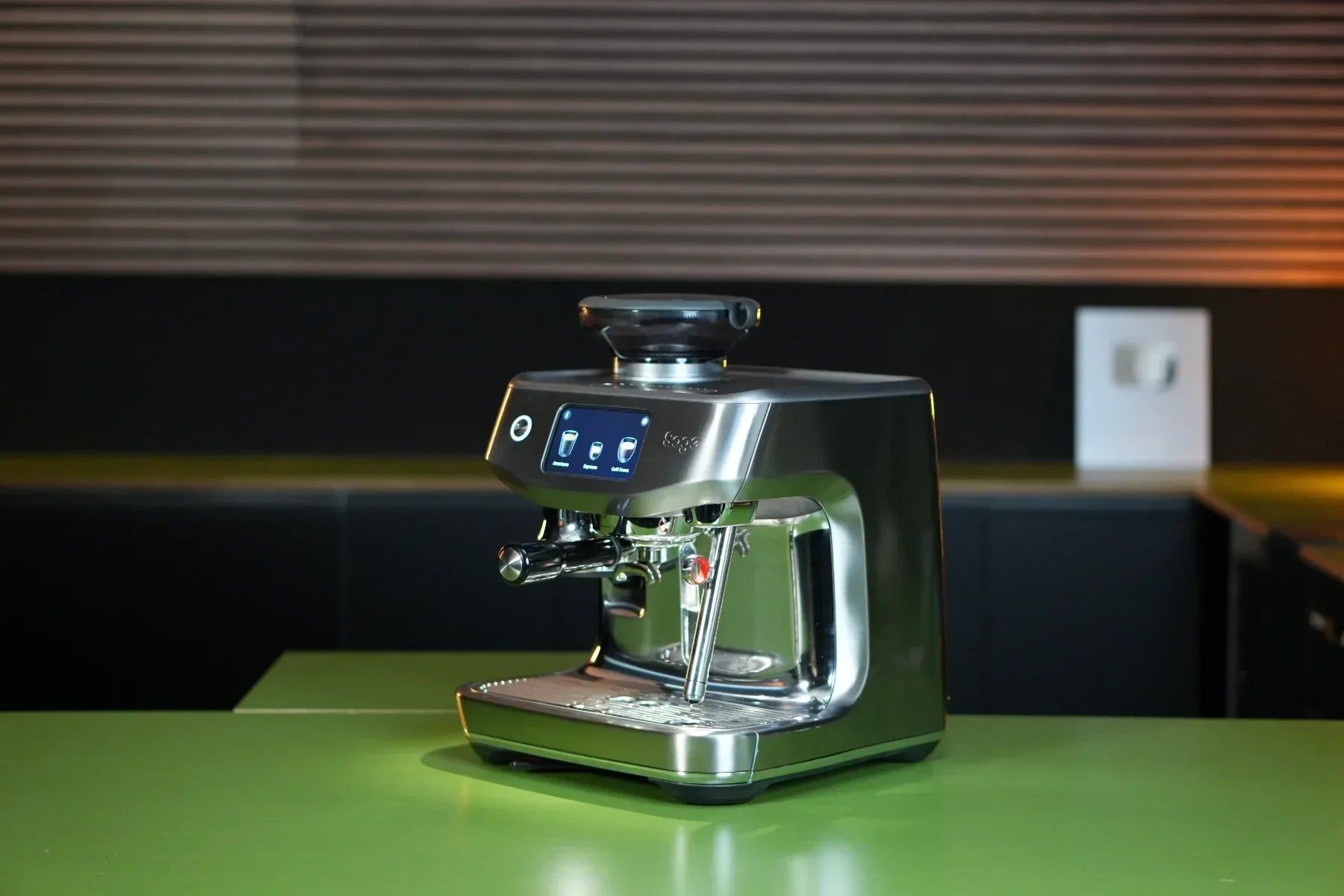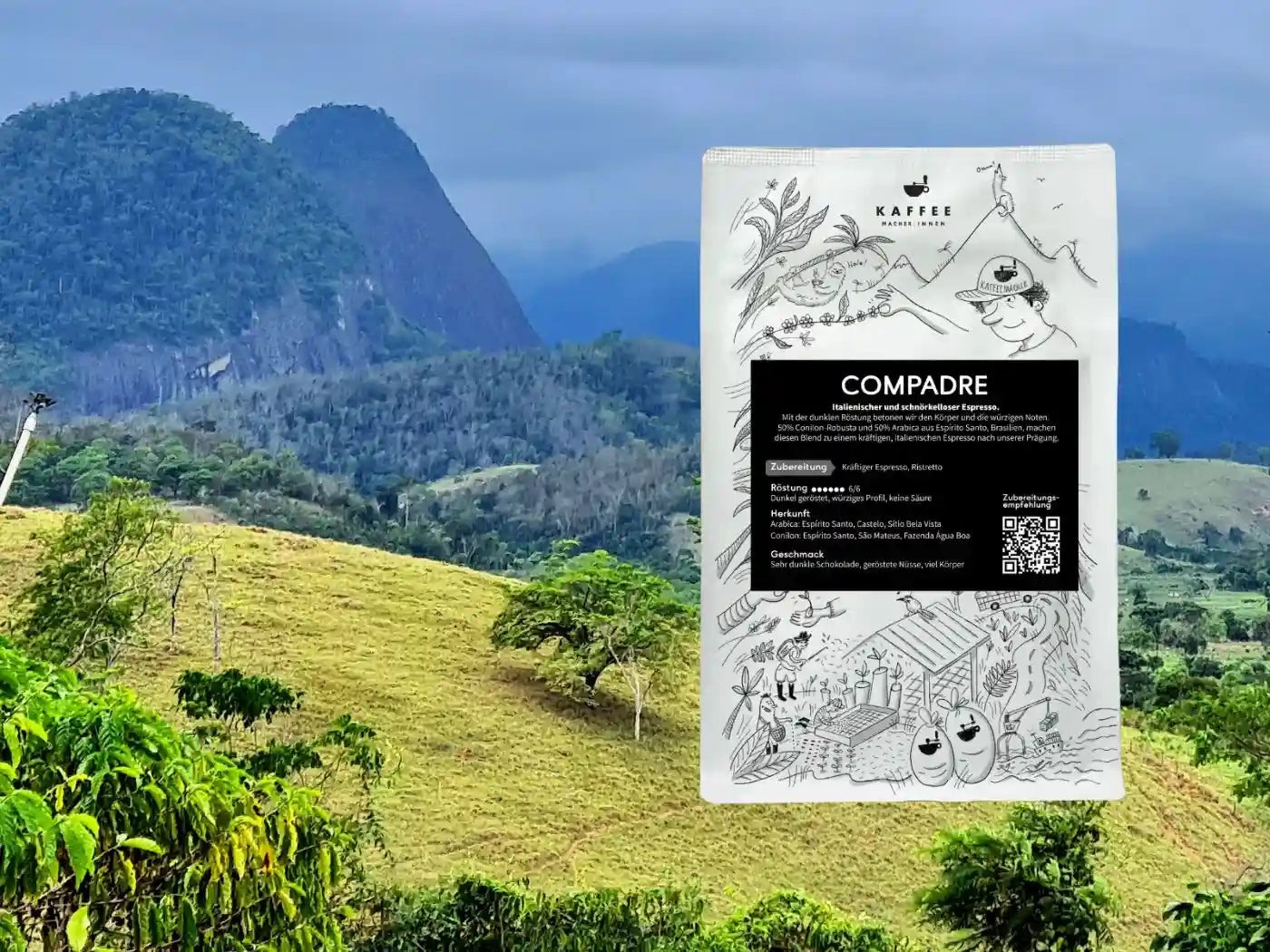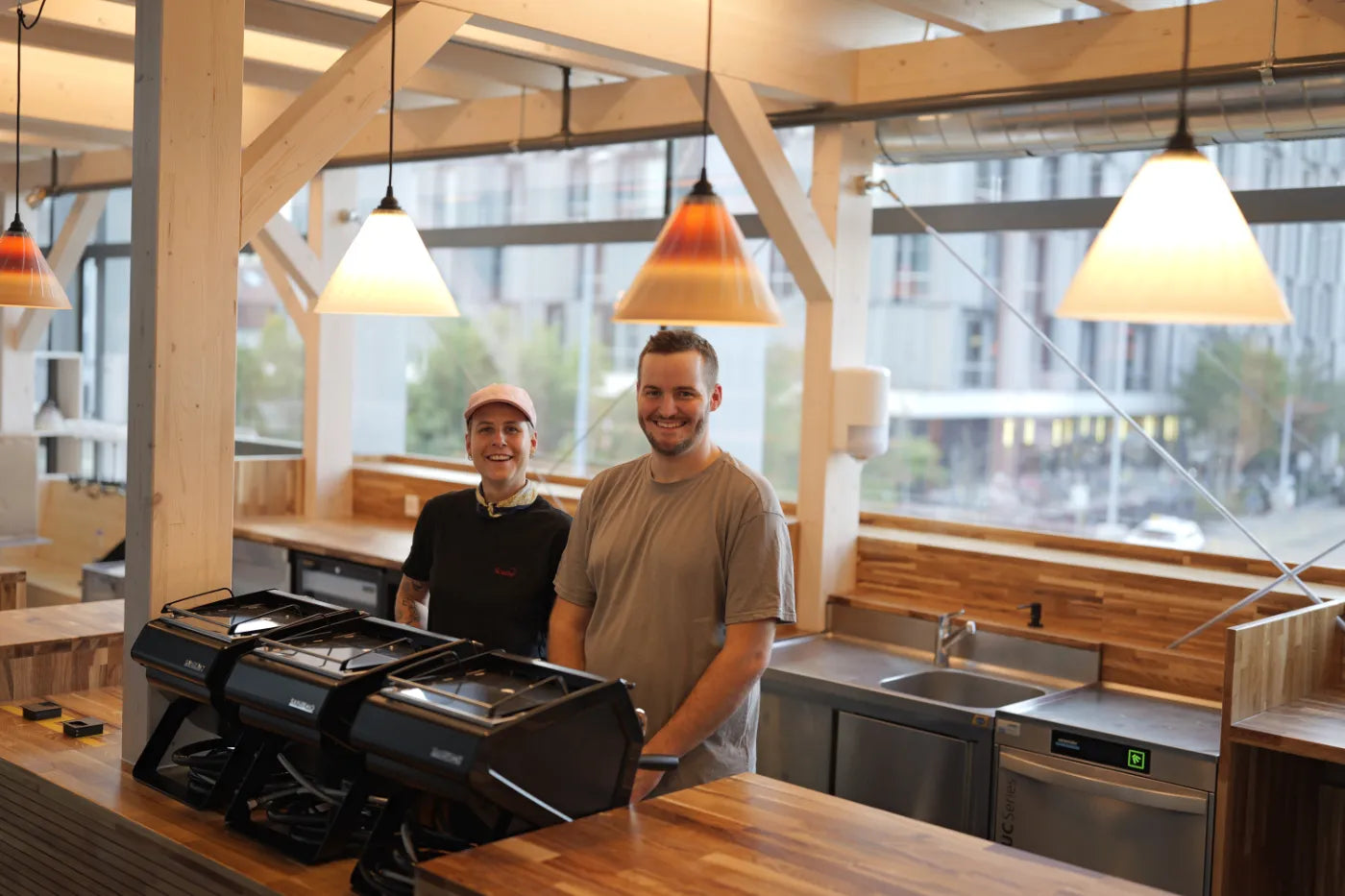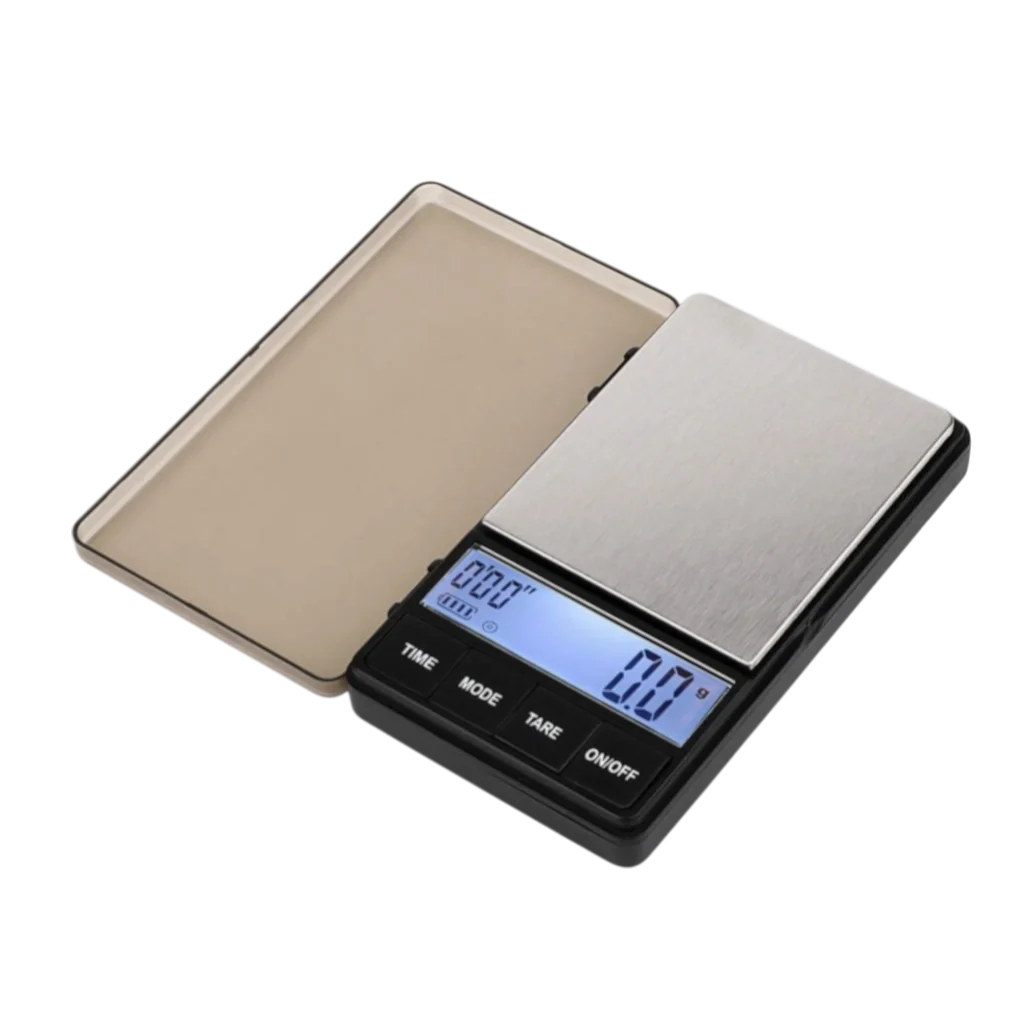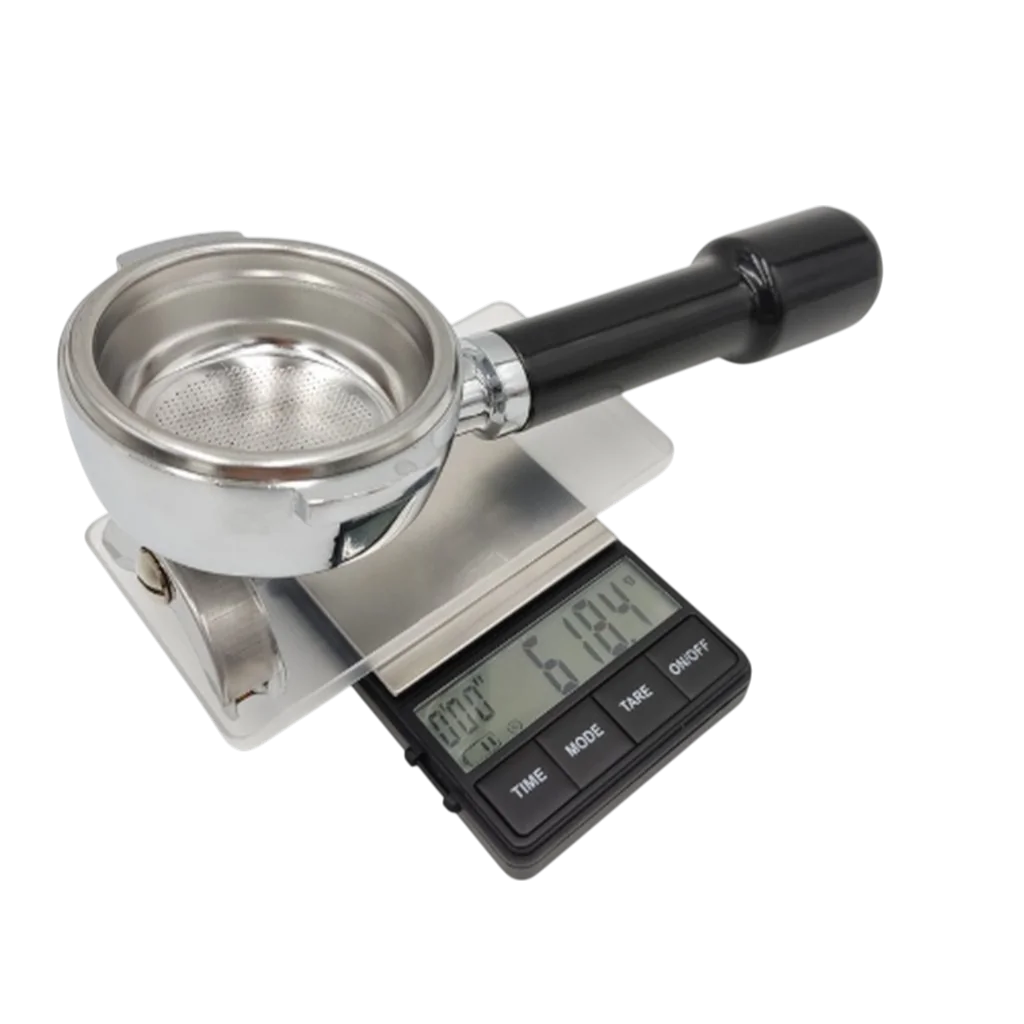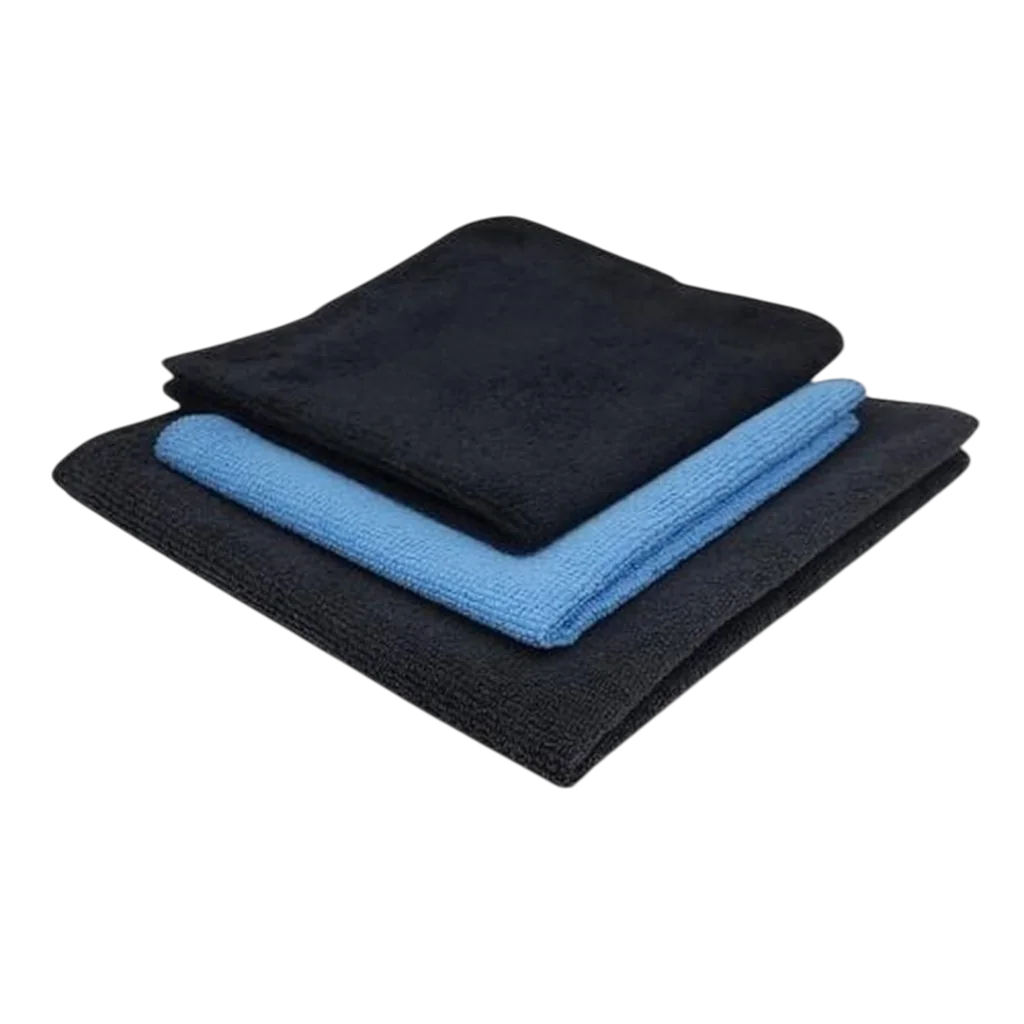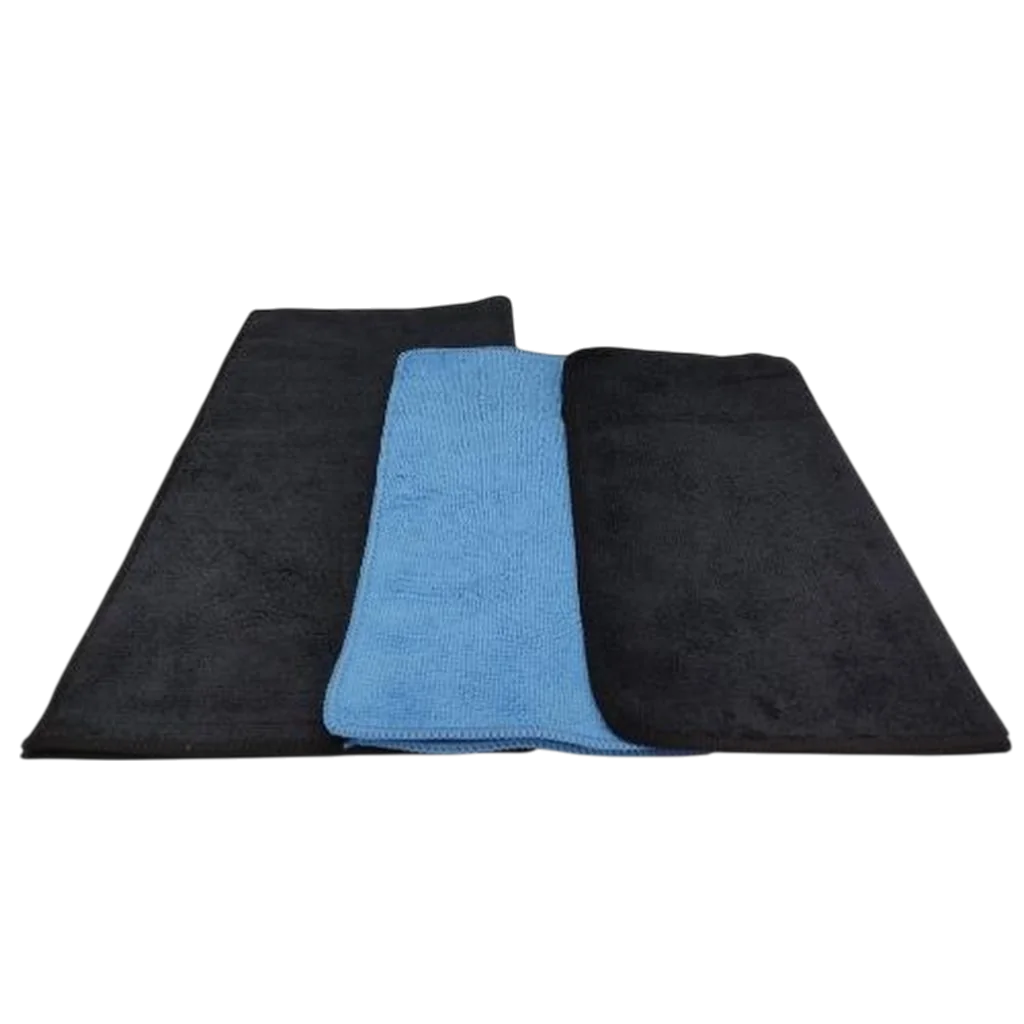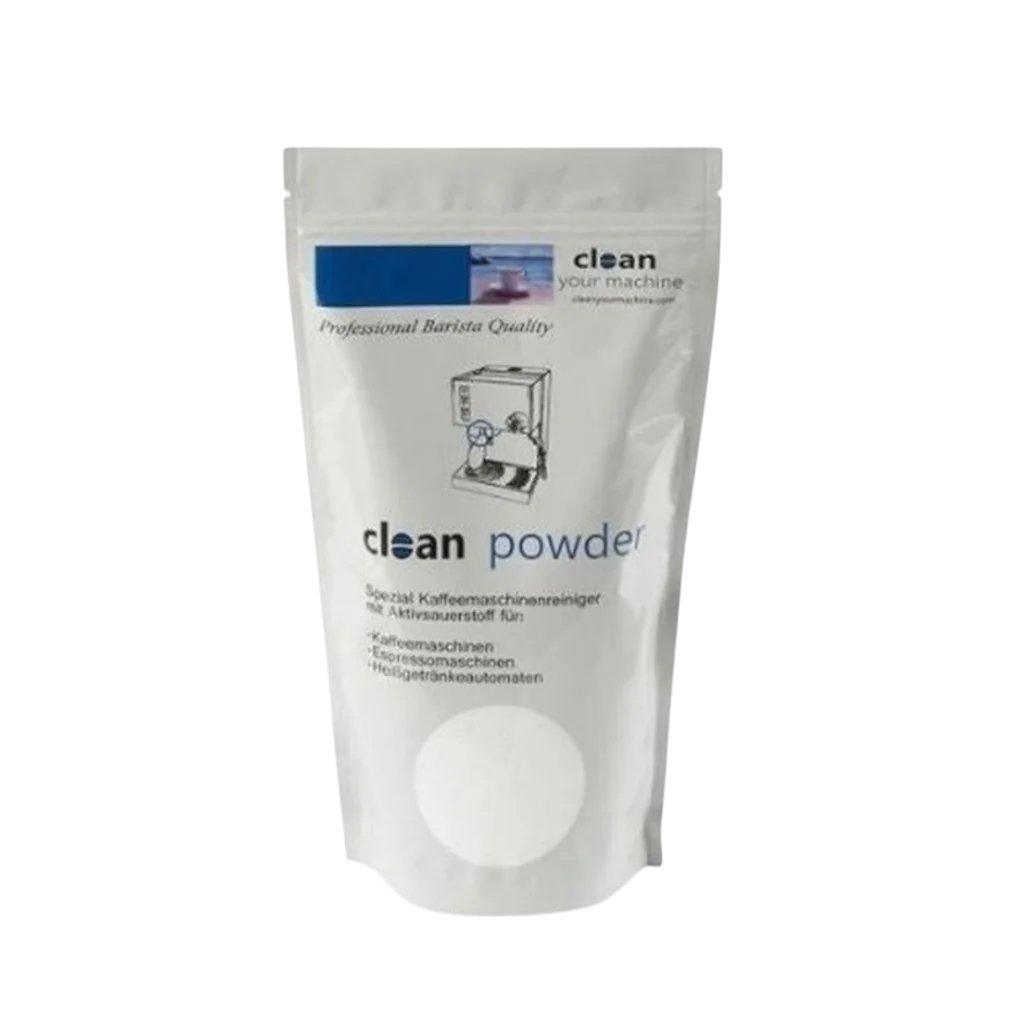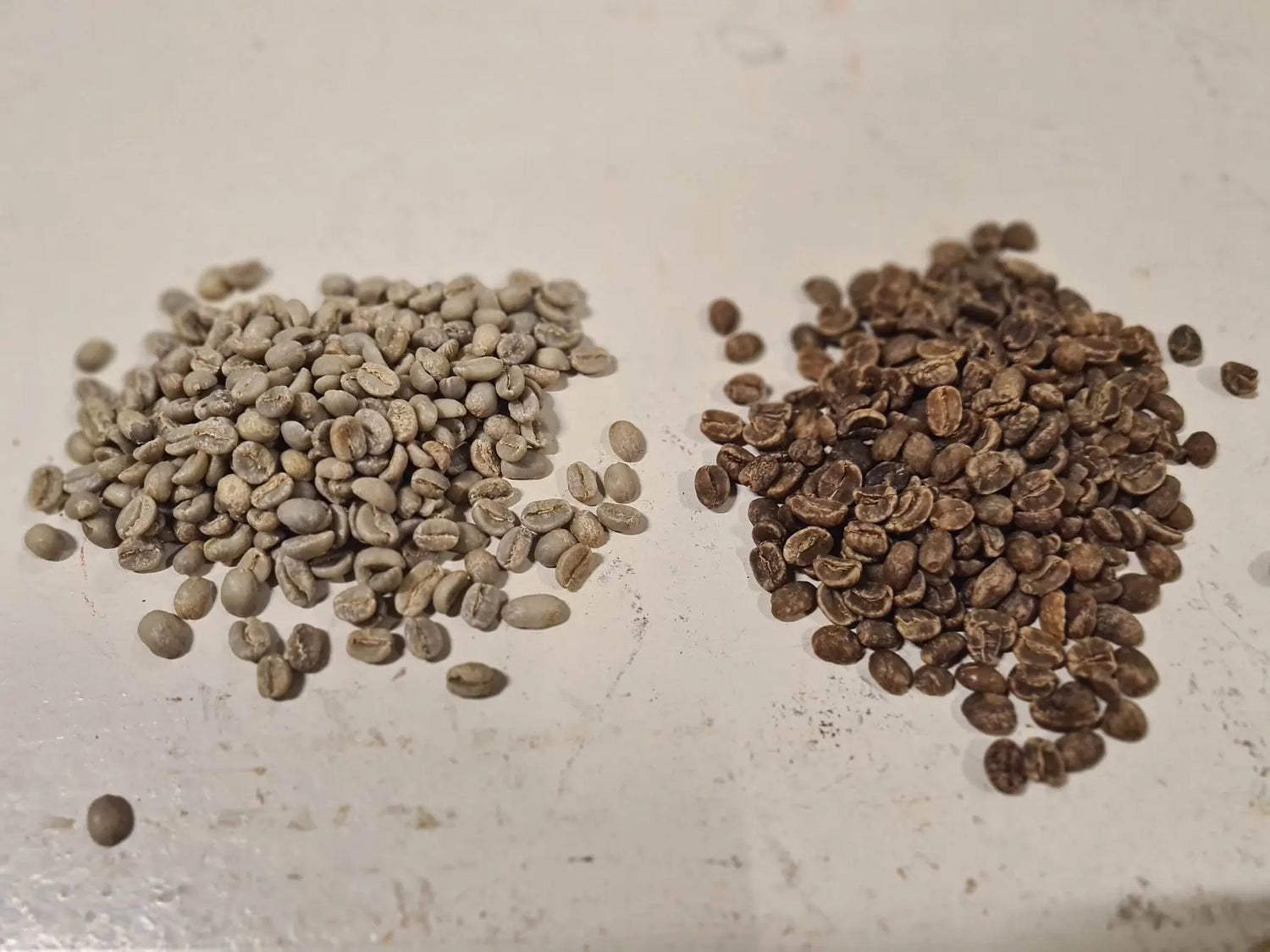Interest in and the market for decaffeinated coffee are constantly growing. We explore where decaf comes from, who decaffeinates it, how it can be made even better, and why it's undemocratic.
Until recently, I thought of decaffeinated coffee as a headache. I drink coffee primarily for pleasure, but I don't deny the effect caffeine has on me, which, in its absence, plagues me with headaches. This results in a somewhat difficult triangular relationship between a cup of coffee, the caffeine, and me as a coffee drinker.
I wanted to test this situation and decided to drink only decaffeinated coffee for a month. I called it my Decaf December . In preparation, I changed my daily coffee consumption one month before the start of my month of caffeine abstinence:
Our Sueño - the decaf from Mexico from Rancho San Felipe
Every day, I replaced 5% of the weighed coffee beans for a filter coffee with our decaf beans. After about a month, I felt ready for Decaf December .
I thought so.
Welcome to another world
“Decaf” is not just another kind of coffee drink, it is a cosmos of its own:
Decaffeinated coffee often tastes different than untreated coffee. Decaffeinated coffee should be roasted and prepared differently, and the market behind the bean is highly concentrated on a few key players.
Interest in decaffeinated coffee has increased significantly in recent years. We're feeling this as a roaster, roasting more decaffeinated coffee each year. The reasons for this increased interest vary, but we hear about two specific ones in particular:
- Avoid caffeine
- milder taste (milder here probably means less bitter)
In response to my social media post, I received many tips about where to find good decaf coffee. I received coffee samples and had great conversations.
>> If you know of any great decaffeinated coffees, please write them in the comments <<
I got some real insider tips; it felt like coffee people were on a treasure hunt. I wondered why it had to be this way? Why is it apparently not a given that you'll find truly delicious decaf coffee?
I spoke with some of the world's largest decaffeination companies, who introduced me to the decaf world: CR3 , Swiss Water , Descamex . I spoke with Les Révélations from Paris, a roaster that exclusively roasts decaf, about how much the perception of decaffeinated coffee seems to be changing, and in my self-reflection, I realized that we simply misunderstand decaf.
How is coffee decaffeinated?
Green coffee, the state of coffee before roasting, contains between 1-1.4% caffeine for Arabica beans and between 1.8-3.5% for Canephora beans (Wintgens, 2012). The roasting process has only a marginal impact on the caffeine content; the content remains almost identical between green and roasted coffee beans.
The process of decaffeination is applied to green coffee, i.e., before roasting. There are various processes that vary in speed and efficiency and can affect the coffee flavor to varying degrees.

What all processes have in common is that, at the beginning of the treatment, the green coffee is placed in a closed container filled with water or steamed to open the pores. A solvent is then added to extract the caffeine.
DCM / Dichloromethane for decaffeination
DCM, dichloromethane, is the most efficient, "but it's not very selective," according to Sebastian Gabriel of CR3. Highly efficient means that a batch is decaffeinated in eight to nine hours. Not very "selective" means that not only caffeine but also other, easily soluble substances are extracted, which are lost from the coffee and often have an impact on the sensory properties.
supercritical CO2 process for decaffeination
In the CO2 process, CO2 is used as a solvent. In the more efficient method, CO2 is used supercritically . In supercritical decaffeination, high pressure is used so that the coffee undergoes the initial Maillard reactions, slowly caramelizing, and thus the first color changes occur.
subcritical CO2 process for decaffeination
In the subcritical CO2 method, the CO2 is converted into a liquid state at high pressure and low temperature, which, when combined with water, can absorb the caffeine. This process takes several days because, according to Sebastian Gabriel of CR3, CO2 is "a lazy solvent that takes about six to seven days to dissolve caffeine."
Water process for decaffeination
The water process uses a "lye" that works without solvents, but with a so-called green coffee extract. For this, green coffee A is soaked in water and then pressed through a semi-permeable membrane. The escaping water is saturated with the soluble substances from the green coffee, but the membrane filters out the caffeine. The green coffee B, which is to be decaffeinated, is then soaked into this resulting "lye," or green coffee extract , as Stacey Lynden of Swisswater calls it. The extract now only works on the caffeine.
Ethyl acetate / sugar cane processing for decaffeination
In the ethyl acetate method, more prosaically known as sugar cane processing, an ethyl acetate solvent is used to extract caffeine from the green coffee. Ethyl acetate is produced by the esterification of acetic acid and ethanol. Because the solvent used for decaffeination with descafecol is obtained from sugar cane in Colombia, it is called sugar cane processing.

The taste of decaffeinated coffee
How should decaffeinated coffee taste? Like a non-decaffeinated coffee? If we're to agree, then decafs have a really tough time because the decaffeination process is noticeable in most cases.
Whether this is a negative thing depends on what we use as a taste reference for a decaf.
Is the reference of a decaf a non-decaffeinated coffee, or is it actually a decaf? Is the reference of a non-alcoholic beer a beer with alcohol?
In the case of Swiss Water, Stacey Lynden tells me that in the sensory analysis of the decaffeinated coffees, they have an attribute that determines how strong the process notes should be tasted.
The coffee world has now managed to treat Robustas separately and discuss them in a different sensory category—even though they are also a coffee. We also don't compare capsule coffee with espresso from a portafilter machine because we know there are differences.
As long as we think that we should always penalize process notes in decaf, we will remain stuck in a rather rigid mentality and may overlook what lies behind the taste and what influences it.
It's important to note that there are process notes and "process notes" – the same green coffee, processed using different decaffeination methods, will taste different. Some will be heavier, others lighter – but what's even more important:
“Coffees with bigger personalities tend to stand out a lot more during the Decaf process”
says Stacey Lynden of Swiss Water Coffee, the largest water decaffeinator. The more distinctive the green coffee being decaffeinated, the more distinctive the coffee will be in its subsequent taste.

Stacey Lynden of Swiss Water in Vancouver, Canada
“High quality coming in, high quality coming out”
The best decaf filter coffee in my Decaf December was from Les Révélations, a roaster from Paris. It was a Natural from Panama by Creativa Coffee District . I brewed it several times and shared it with the team, and I received feedback like, "Ah, Natural, where's that from?" - And I simply said, "Panama, roasted in Paris," but I omitted the decaf information.
We didn't taste the process notes because the green coffee was very distinctive : It was a natural coffee, fermented in closed containers before drying. As Stacey Lynden of Swiss Water would say: "high quality coming in, high quality coming out."
Yes, the decaffeination process adds a process note to the coffee, but if the base material is characteristic, then you can hardly taste it in individual cases.
What does the decaffeination process do to the taste of coffee?
But the process also removes something, namely bitter substances, in addition to the caffeine, which is also bitter.
“The acid is also homogenized,”
says Sebastian Gabriel of CR3, the largest decaffeinator using subcritical CO2. Roasteries often purchase inferior green coffee and then decaffeinate it because the process can somewhat mitigate the poor quality of the green coffee. Or, more prosaically: "It can even enhance the flavor of the poor quality of the green coffee, or rather, flatter the green coffee," says Gabriel.

Sebastian Gabriel, CR3, Bremen
The process of decaffeination also removes soluble compounds from the green coffee, such as fats, carbohydrates, acids, and even melanoidins, which influence our perception of texture, i.e. how a coffee feels on the tongue.
Swiss Water Decaf in Vancouver has designed its own evaluation form to document the changes before and after the process. They measure the extent to which the coffee has changed on a scale of 1 to 6. They assess flavor notes, acidity, and body—which they divide into texture ( mouthfeel ) and thickness (thickness or density ).
Stacey Lynden of Swiss Water says that the body of the coffee changes the most. This is due to the loss of soluble compounds. For example, decaffeinated coffee contains relatively more insoluble compounds than soluble ones. This affects not only the brewing process but also the flavor.
The color: darker, but not burnt
“The color change has nothing to do with oxidation,”
Sebastian Gabriel from CR3 tells me. In their case, decaffeination with subcritical CO2, it's a combination of pressure, heat, re-humidification, and re-drying of the green coffee that results in a color change.

Left: an untreated green coffee from Ethiopia, right: decaf from Mexico, decaffeinated with water
Stacey Lynden of Swiss Water says that the green coffee extract, the “lye” in the water process, deposits some of its color in the seed, making the coffee darker.
Freshness: Decaf ages faster
However, both Gabriel and Lynden note that oxidation generally occurs more quickly with decaffeinated coffee because the process dissolves antioxidants in the coffee. This means that the coffee ages faster than both green and roasted coffee.
An interesting fact about decaffeinated coffee is that it can have a darker color even at a lower final temperature in the roasting drum. However , once ground, it remains light—the difference between the outer and inner color is relatively large.
For all non-decaffeinated coffees, this would be an indication of uneven development of the bean, but in the case of decaf, it is the process that causes this phenomenon: during the process, the cell structure of the coffee bean becomes more porous and the coffee oils penetrate out more easily.
This not only changes the color but also causes the coffee to age faster. The opposite is also true: Due to the high porosity, oxygen penetrates the bean more quickly. This means: To get the maximum quality, you should buy decaffeinated coffee in small batches and drink it fresh to very fresh. While we wait up to three weeks for dry-processed coffees, we drink decafs just one week after roasting.
Preparing decaffeinated coffee
Even though decaffeinated coffee is still coffee, the process changes the brewing behavior. In all my Decaf December tests, the water, DCM, and ethyl acetate decafs had longer extraction times in filter brewing than non-decaf. Subcritically decaffeinated CO2 coffees behaved most similarly to non-decaf, meaning they had a similar extraction time in filter brewing.
“The decaffeinated coffee bean is more porous, resulting in a larger contact surface for the water, so the brewing takes longer,”
Sebastian Gabriel from CR3 tells me. They suspect that decaf breaks differently in the mill, which we'll soon examine in a grinding analysis.

The decaf beans (left) appear darker than the light roasted filter coffee from Brazil on the right

When ground, the decaf (left) is hardly any darker
Stacey Lynden of Swiss Water therefore brews her decaf filter coffee with a coarser grind. However, because the decaffeinated coffee has already broken down soluble compounds during the process, she measures a lower strength (or TDS) in her drink. Stacey advises:
- grind coarser
- higher dosage
- shorter blooming time because the coffee degasses faster
Back to our natural coffee from Panama: the coffee was very good and recently roasted; I extracted it slightly too much. It showed hardly any sensory signs of decaf—why isn't this standard?
Because of the quantity.
And the focus.
And the risk.
And the price.
In short: because the decaf market is highly consolidated and coffees like our example from Panama Nano stories are in a less transparent mass market.
The decaf market: undemocratic and consolidated
Who actually decides which green coffee is decaffeinated?
Typically, it's trading houses that want a decaffeinator (CR3, Coffein Company, Swiss Water, etc.) to decaffeinate a specific green coffee or already blended coffees, so-called basket blends. Sebastian Gabriel of CR3 told me that the decaffeinator is never the "owner of the goods, but merely the processor."
If they're not trading houses, then they're roasters who want a specific coffee decaffeinated. For example, we did this with Rancho San Felipe a few years ago: We promised to purchase 50% of a batch of decaffeinated coffee. They then had the coffee decaffeinated at Descamex, and since then, we've had the coffee in our range as Sueño.
The batch size is the bottleneck
For Descamex to decaffeinate the green coffee for Rancho San Felipe, they had to deliver 50 bags of green coffee, or 2500 kg. This is the minimum size for decaffeinating coffee at Descamex. At Swiss Water in Vancouver, the new limit is 4560 kg, and at CR3, it's around 3000 kg.
This leads to three challenges:
- First, a trading house or roastery needs customers for a minimum order of approximately 3,000 kg of decaffeinated coffee. This volume should be sold relatively quickly, as decaf coffee has a shorter shelf life than untreated coffee.
- The process is a blind flight—there's no way to quickly decaffeinate a sample of a particular coffee and then decide whether it's sensorially interesting. The 3,000 kg is the test batch.
- And again, sensory analysis: if at least 3,000 kg or more have to be decaffeinated to make running the plant worthwhile, which coffees are processed? Exactly, it's rarely the microlots, because there's so little coffee of those.
Less complex decafs because the barrier to entry is too high
I joked with Piroska Hunyadi from Révélations that we actually need a 60kg decaffeination machine to make it attractive to decaffeinate very rare and sensorially complex coffees on a miniature scale.
The aforementioned batch from Panama that she roasted weighed at least 3,000 kg, so Swiss Water could decaffeinate it. There are very few coffee producers capable of producing 3,000 kg of coffee at that level, so the barrier to entry for great coffees in the decaf market is far too high.
I'd love to have a 300kg batch from Peru decaffeinated because it's a coffee I'd also like to drink in the evening. But it's not possible because there's not enough coffee. Sebastian Gabriel from CR3 on this again:
"Scaling simply makes much more economic sense. Decaffeination is capital-intensive, and the safety and environmental regulations are very strict, which really only justifies scaled production."
Thus, the decaf market isn't truly democratic. As long as batch sizes remain so large, and continue to grow like Swiss Water, smaller batches won't make it into the decaffeination process. Coffee drinkers are somewhat at a disadvantage in terms of sensory perception: there won't be any decafs with a truly complex flavor, and if there are, they'll only come from a few farms capable of producing superb quality at a high level.
A blatant consolidation
We know that the coffee market is highly consolidated: on the roasted coffee side, a handful of roasters account for 50% of the coffee offered . And on the green coffee side, the five largest countries produce more than 80% of all green coffee .
Now the situation on the decaf market is not so different:

The number of decaffeinators available for coffee processing by trading houses and roasters is extremely limited. Ever-increasing price pressure and the associated efforts to improve efficiency are leading to batch sizes becoming larger rather than smaller. As mentioned above, specialty coffees are difficult to decaffeinate.
Final thoughts and a wish
“Decaf drinkers are the most loyal of all customers - if we manage to offer high-quality decaf, we are doing a service to our best customers,”
says Stacey Lynden of Swiss Water in Vancouver. Yes, from a sensory perspective, she's right: decaf drinkers drink decaf for the taste and feel, not for the caffeine.
She sees great potential for even better decaf, as does Sebastian Gabriel of CR3. What all these statements have in common is that they refer to the process, which should be as mild as possible, so that the processed coffee is as close as possible to non-decaf coffee.
But if we look at the coffee farm itself, things look different. Very few farms or producers can produce batches of 3,000 kg or more that are of the highest sensory quality – and even if they do, it's still up to the trading house or roastery to decide whether the coffee should be decaffeinated.
In my opinion, these uncertainties often lead roasters to be somewhat less bold when it comes to choosing decaffeinated coffee. However, if roasters work together and commit to a certain amount of coffee, even the highest-quality coffees can be decaffeinated.
So, my dream would be a small decaffeination machine—one that could decaffeinate 60 to 120 kg. The market for this would be small roasters that want to decaffeinate specialty coffees.
No headaches - and much more coffee
After the first week of my Decaf December, the headaches disappeared. I got up, drank a decaf filter coffee, and started the day feeling just as alert as usual. I drank filter coffee like there was no tomorrow, because I usually stop drinking coffee around mid-afternoon so the caffeine doesn't interfere with my sleep.
But during my Decaf December, I continued drinking coffee every evening, since there were no side effects. My bean consumption increased by 80%, obviously because I was also trying different coffees. My consumption has since decreased, but I still drink decaf coffee regularly in the evenings instead of filter coffee, but one thing has remained the same: I have fewer or no headaches in the morning – maybe it has something to do with the 30-day caffeine abstinence, maybe not, but in any case, a new world has opened up for me that I wouldn't want to miss anymore.
Best decaffeinated coffee
Decaf recommendations: What are your tips? Share them in the comments.
A few highlights from my Decaf December were:
- JB Coffee
- Revelations de Cafe
- 6054 Coffee Roasters
- Green coffee samples from Brazil via Touton by Alec Pfuhl
More about our decaffeinated coffee, the Sueño from Mexico:
- The story behind the coffee, the Rancho San Felipe
- See the video below
- The coffee in the CH shop and in the DE/AUT shop
